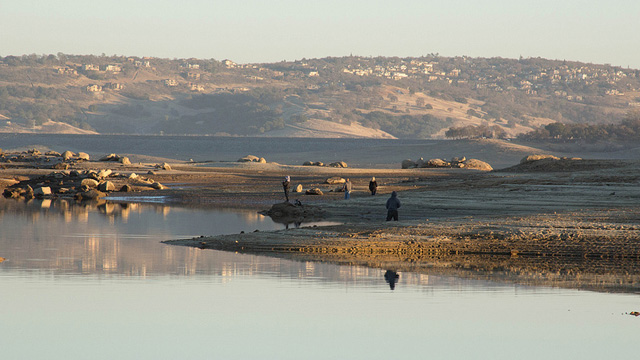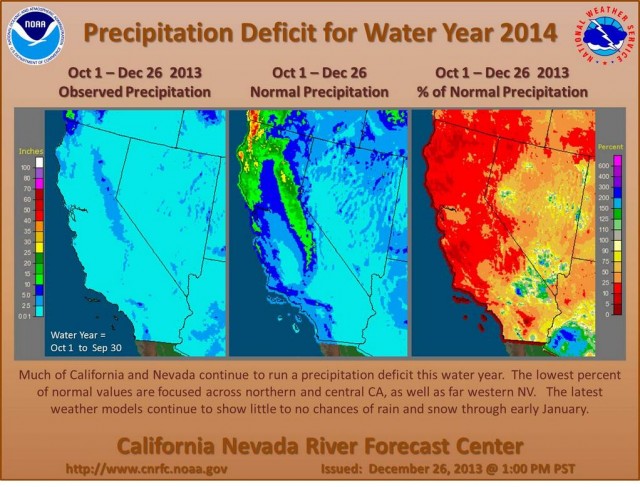
It wasn’t quite the “millennium drought” that desiccated Australia for nearly a decade. But for many parts of California, 2013 was the driest year on the books. After above-average rain and snow in November and December of 2012, the tap suddenly shut off just as the calendar turned over to 2013, and there’s been little-to-nothing since.
The 5.59 inches that had fallen on San Francisco by New Year’s Eve shattered the previous dry mark of nine inches, set in 1917.
The extended dry spell had water authorities and farmers on alert as early as November, when the state’s Department of Water Resources (DWR) issued its lowest-ever estimate for water deliveries from the State Water Project: five percent of what water contractors are asking for. That number is notoriously fluid, starting out on the conservative side and rising with the winter snows. In 2010, the only other year that started with a five-percent projection, officials eventually upped deliveries to 50 percent. But this season’s first official survey of the Sierra snowpack shows statewide water content at a nail-biting 20 percent of normal. Remote sensors from the northern range clocked in at 11 percent, which is a scant four percent of what water managers like to see on April 1.
Long-range forecasts have not been encouraging. Governor Jerry Brown assembled an interagency drought management task force, which began meeting in late December, and some cities have already announced water restrictions — some voluntary, some not.
